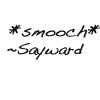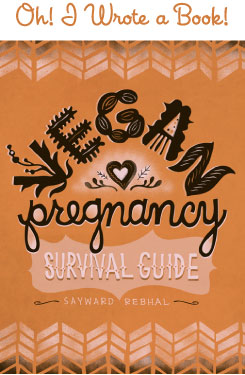
Sauerkraut is a traditional dish of lacto-fermented cabbage. But don’t let the ‘lacto’ fool you – there’s no dairy in there! Lactobacilli are the bacteria that lend the name, and they live on raw cabbage leaves. When encouraged under the correct conditions, these bacteria begin the incredible fermentation process that turns a moderately healthy food into a nutritional goldmine!
Raw unpasteurized sauerkraut is incredibly high in vitamin C, probiotics, digestive enzymes, and cancer-fighting compounds. For a more thorough discussion of the fantastic, fabulous affects of fermented foods, you can read my article. Otherwise, just trust me when I say that sauerkraut is super delicious, super nutritious, and super easy to make at home.
To culture a batch of cabbage, all you’ll need is:
- cabbage, green or purple, as much as you want
- sea salt, about 1 tablespoon per 2 pounds cabbage
- a sharp knife + cutting board OR a food processor
- a very, very large bowl
- large glass jars or a glazed ceramic (lead-free) crock
- coffee filter/rag/wash cloth + rubber band
Step One
First, peel a few of the outer leaves from each head and set them aside. Then, cut the cabbage! You can thin slice it by hand (my preference) or you can use a food processor for a more diced, ‘fluffy’ affect. Surface area is crucial so try to slice as thinly as possible.
 Step Two
Step Two
Put all your cabbage in a very big bowl. It looks like a ton but it shrinks up, I promise. Sprinkle the salt over the cabbage. My general guide is 1 tablespoon per 2 pounds, but there’s lots of wiggle room. You *do* need enough salt though, as it draws the moisture out of the leaves via osmosis, and it also keeps the fermenting liquid inhospitable to ‘bad’ bacteria. Make sure you use sea salt, not table salt.
Step Three
Give it a good massage! I like to use my hands but you can use a potato masher or even the blunt bottom of a cup or jar. What you’re doing is breaking down the cell walls and extracting moisture. You’ll see the cabbage go from crisp to limp, and the volume will significantly decrease.
 Step Four
Step Four
Now it’s time to pack it in. Use a very clean glass jar or glazed ceramic (lead-free) crock. Handfull by handfull, stuff the soggy cabbage in and press it down hard. If you do it right you’ll be able to get a big head of cabbage into a very small space. Tamp it down after each handful and notice how the liquid always rises above the solids. Top it off with the last of the cabbage and the last of the liquid.

 Step Five
Step Five
Now, take one of those large outer leaves and press it down on top of the shredded cabbage (shown left) . You may have to tear it into a few pieces to get it to fit, but basically you’re making a little hat to keep all the shreds submerged.
Then, you need to weight it down to keep it from floating. I use a smaller jar filled with water (shown right), but you can also use a ziplock bag of water, a small plate – whatever works with your setup.
Finally, cover the top with a breathable barrier – something to keep out dust and bugs but to allow air flow as well. I prefer coffee filters (shown at top), which I can use again and again. Secure with a rubber band and set in a coolish spot to ferment.
Check every day to make sure the shreds stay under, and use a clean hand to push them back down if necessary. Taste test every few days – it’s done when you think it tastes yummy! Kraut can ferment anywhere from 5 days to 5 weeks and will then store in the fridge for months. Enjoy!
~~~
For more instruction here’s an awesome video from the fermenting master himself, Mr Sandor Ellix Katz (aka Sandorkraut). Check it out – he’s the shizzie y’all.
~~~
Also! I thought it would be fun to share this little ‘behind-the-scenes’ photo. People always ask me how in the world I find the time to get all this stuff done. The answer is simple: I am a crazy person. Ha! But here’s the proof. Working spread out on my kitchen floor, wearing my baby (who is totally passed out!), up to my elbows in experiments, catching up on my animal rights podcasts . . . and grinning like a mad woman, because I’m LOVING IT!
BONZAI!





Pingback: Кисела зелка / Sauerkraut | sitnoseckano
Pingback: Wat maakt Suzette nu » Kimchi met Laurie
Pingback: How To Make Kimchi (Spicy Fermented Veggies) | Bonzai Aphrodite
Pingback: Living Foods
Pingback: how to make sauerkraut | Cityhippyfarmgirl
Pingback: kraut-to take two | Rachel in Veganland
Pingback: Bonzai Aphrodite’s Sayward Rebhal | Allison's Gourmet "Sweet Talk" Blog
Pingback: How To Make Apple Cider Vinegar At Home – From Leftover Apple Scraps! | Bonzai Aphrodite
Pingback: Repairing the Gut | Angry Gluten
Pingback: Tren kesehatan 2017 | VOXPOPS
Pingback: Tren kesehatan 2017 – OkeStyle
Pingback: Keep your gut happy with Homemade Sauerkraut | Spirited Practice
Pingback: Tren Kesehatan Tahun 2017 – Harian Inhua Online
Pingback: Alimentos Fermentados - os "Bichinhos do Bem" - Menos Rotulos